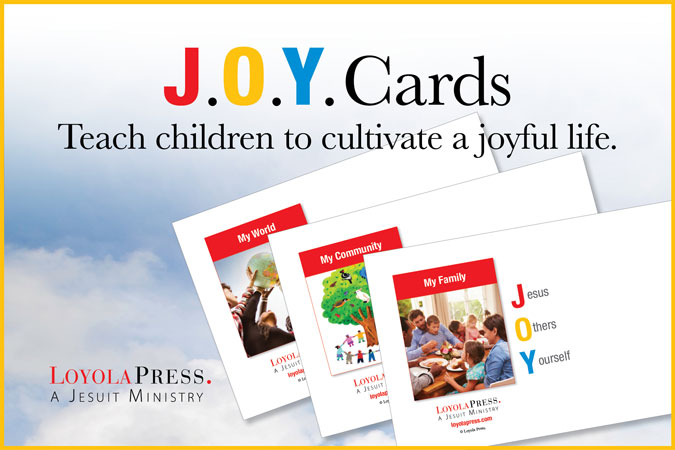
Cultivating and sustaining joy in the spiritual life has received quite a bit of attention in recent years. Pope Francis has made joy a central part of his message, as we see in the encyclical Evangelii Gaudium, The Joy of the Gospel.
The Holy Father reminds us over and over again that the Christian life is characterized first and foremost by joy:
Joy is a pilgrim virtue. It is a gift that walks, walks on the path of life, that walks with Jesus: preaching, proclaiming Jesus, proclaiming joy, lengthens and widens that path. It is a virtue of the Great, of those Great ones who rise above the little things in life, above human pettiness, of those who will not allow themselves to be dragged into those little things within the community, within the Church: they always look to the horizon. . . . The Christian sings with joy, and walks, and carries this joy. (Homily, 10 May 2013)
While joy is often confused with happiness, the two are distinct and not interchangeable. Joy is long-lasting, bears fruit, and triumphs despite challenge and darkness. Happiness, on the other hand, is fleeting and often can be bought or experienced in the short term. This doesn’t mean that joyful people aren’t happy; they very often are. But joyful people know that the wellspring of joy comes from outside of themselves. Joy comes from having a lasting relationship with Christ, who sustains and nourishes us. “With Christ, joy is constantly born anew,” Pope Francis reminds us. (Evangelii Gaudium, 1) This newness is in itself a source of joy.
How do you teach joy to children or adults? A creative and practical way that I have found to teach others joy is to use the acronym J.O.Y.: Jesus. Others. Yourself. If you live your life and put Jesus and others ahead of yourself, then you are on the path toward living a truly joyful life. This doesn’t mean that you won’t have bad days or times of doubt, confusion, or suffering, but if your hope is in Christ, you will never be disappointed.
I created simple J.O.Y. cards to help my students cultivate joy, and I was surprised by their popularity. These cards also gave them the means to live a joyful life. You can change them depending on the liturgical season or grade level, and you can include ideas and practices likely to appeal to different ages.
Each card has a section labeled “Jesus,” “Others,” and “You.” Each section offers space to write different suggestions for cultivating joy.
Jesus. In this section, be sure to include a quote from Jesus such as “Come and see.” (John 1:39) Include some ways that students can live out this Scripture verse by listing some ways that they can experience Jesus, such as:
- Spend some time alone with Jesus in prayer.
- Attend Mass with your family or a friend.
- Open up the Bible. Choose a passage to reflect upon.
- When you take the Eucharist, thank Jesus for this moment in the silence of your heart.
Others. Include an appropriate Scripture verse, such as “For where two or three are gathered in my name, I am there among them.” (Matthew 18:20) Keep the focus on community, particularly friends, family, and the needs of the local, national, and global Church. Practical ideas include:
- Read or study a Catholic book with your friends.
- Handwrite a card to a friend or neighbor.
- Thank grocery cashiers by name.
- Say a prayer for those around the world who are not free to practice their faith.
Yourself. In this section, include prayers, reflection questions, interesting and thought-provoking Scripture verses, or practices that help students to grow in faith, such as:
- Reflect on the truth in Isaiah 43:1, “I have called you by name, you are mine.”
- What am I struggling with at the moment? How can I give this struggle to the Lord?
- What is one way that I noticed God’s presence today? Pause and give thanks.
- Thank you, Father, for being with me today. Help me to follow you and give me strength. I ask this in your name. Amen.
Encourage your students to take their cards home and share them with their parents. Begin your lessons with prayer and faith sharing around these cards regularly to encourage their use. These simple but meaningful ideas lend themselves to beautiful and intimate sharing. End the lesson with a prayer of thanksgiving focused on joy.
What is your experience using the J.O.Y cards? What are some other ways you incorporate prayer and joy with your students?





this is a wonderful idea. i am looking forward to giving out the JOY cards to my 4th grade CCD class
I love this JOY card. I can’t wait to use it
I would appreciate seeing samples of how these JOY cards have been used. Is that possible?